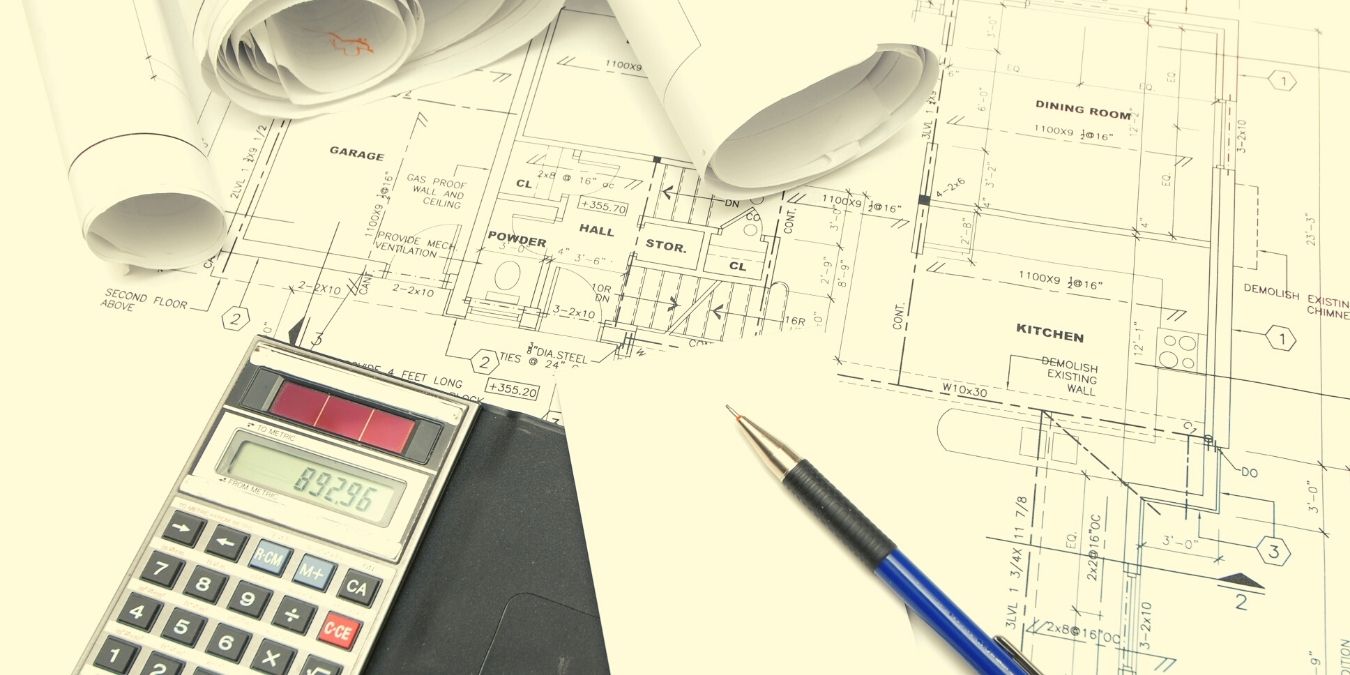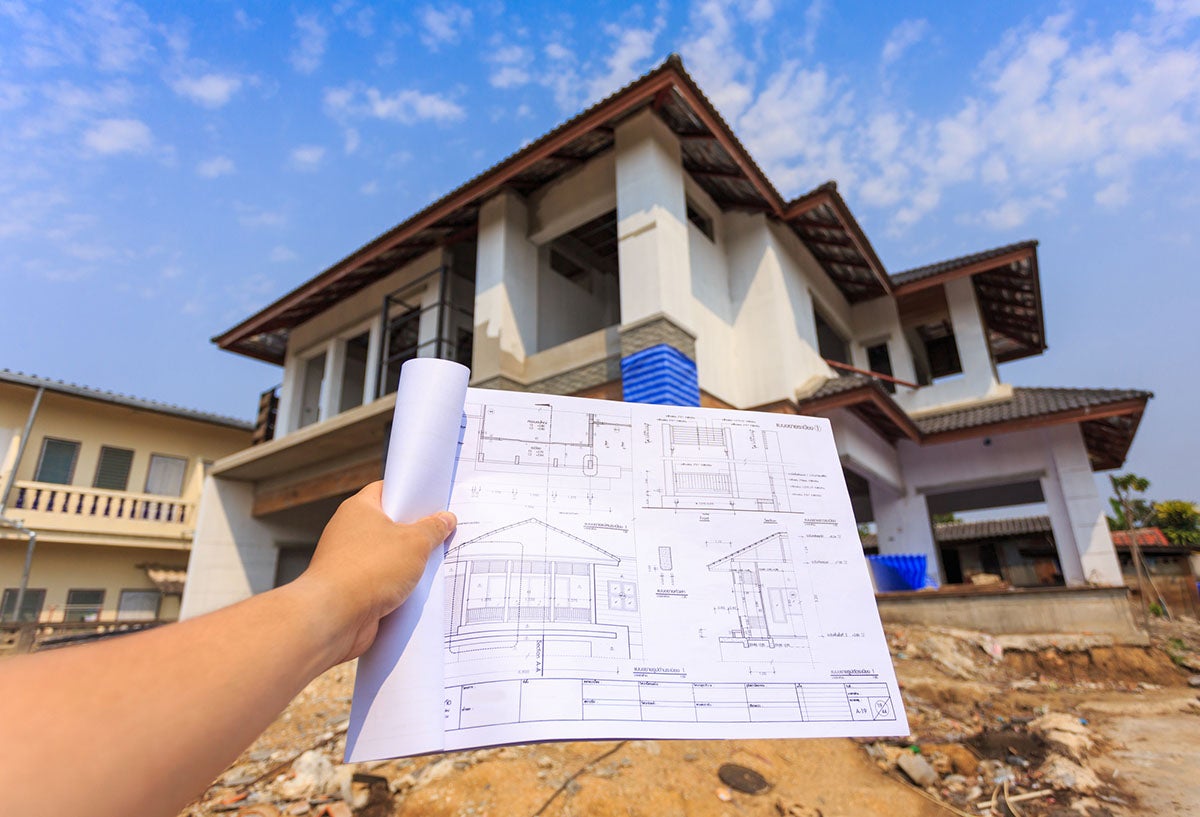Home>diy>Building & Construction>What Is Contingency Cost In Construction


Building & Construction
What Is Contingency Cost In Construction
Modified: December 7, 2023
Discover the meaning and importance of contingency cost in building construction projects. Learn how it helps mitigate unforeseen expenses and ensures smooth project completion.
(Many of the links in this article redirect to a specific reviewed product. Your purchase of these products through affiliate links helps to generate commission for Storables.com, at no extra cost. Learn more)
Introduction
Welcome to the world of construction, where every project comes with its own set of uncertainties and unexpected challenges. One of the essential aspects of successful construction project management is the accurate estimation and allocation of costs. Among various cost components, contingency cost plays a crucial role in ensuring that projects stay on track and within budget.
Contingency cost is a term frequently used in the construction industry to account for unforeseen events, risks, and changes that may occur during the construction process. It serves as a buffer fund to cover any additional expenses that may arise due to unforeseen circumstances, such as design changes, weather disruptions, or material price fluctuations. In essence, contingency cost is a provision for the unknown, providing financial flexibility and mitigating potential risks.
Understanding the concept and importance of contingency cost is essential for both project owners and construction professionals. It allows for better financial planning, reduces the likelihood of budget overruns, and ensures smooth project execution.
In this article, we will delve deeper into the definition, importance, factors influencing, methods of calculation, examples, and strategies for managing contingency cost in construction projects. By the end, you will have a comprehensive understanding of why contingency cost is crucial in construction and how to effectively manage it.
Key Takeaways:
- Contingency cost in construction is a vital safety net, providing financial flexibility to navigate uncertainties, maintain budget control, and ensure successful project outcomes.
- Effective management of contingency cost involves thorough risk assessment, accurate cost estimation, proactive monitoring, and fostering collaboration to address unforeseen events and mitigate financial risks.
Read more: What Is A Construction Contingency
Definition of Contingency Cost in Construction
In the realm of construction projects, contingency cost refers to the provision of additional funds set aside to deal with unforeseen events, risks, and changes that may occur during the construction process. It is an amount that is added to the base budget to account for uncertainties and mitigate potential financial risks.
Contingency cost acts as a safety net for construction projects, serving as a buffer against unexpected circumstances that may impact the original budget. These unexpected events can range from design changes, material price fluctuations, labor shortages, regulatory changes, weather disruptions, to unforeseen site conditions.
The amount of contingency cost allocated to a construction project depends on the level of uncertainty and perceived risks associated with the project. Contingency cost is typically expressed as a percentage of the total project cost or the construction cost. The percentage may vary depending on various factors, including the complexity of the project, the level of detail in the planning and design phase, historical data, and the experience of the project team.
Contingency cost covers a wide range of potential expenses, including but not limited to:
- Change orders: Any modifications or alterations to the original project scope that arise during construction.
- Unforeseen conditions: Unexpected circumstances encountered during construction, such as hazardous materials, unstable soil, or hidden utilities.
- Schedule delays: Delays caused by factors beyond the control of the project team, such as extreme weather conditions or labor strikes.
- Inflation and material cost escalation: Fluctuations in the prices of construction materials and labor rates over the course of the project.
- Regulatory changes: Changes in local, state, or federal regulations that require adjustments to the construction plans or the adoption of new construction methods.
By including a contingency cost in the project budget, construction professionals and project owners can proactively manage risks and ensure financial stability throughout the construction process.
Importance of Contingency Cost in Construction Projects
Contingency cost is a critical aspect of construction project management, playing a vital role in the success and financial stability of projects. Here are some key reasons why contingency cost is important:
- Managing Uncertainty: Construction projects are inherently complex, and uncertainties are bound to arise throughout the process. Contingency cost provides a financial cushion to address unexpected events and mitigate potential risks. It allows project teams to respond effectively to changes without compromising the overall project objectives or budget.
- Budget Control: Contingency costs serve as a buffer against unforeseen expenses and help keep the project within the allocated budget. By allocating a specific amount for contingency, project owners and managers can better control and track project costs, reducing the likelihood of budget overruns. It promotes financial discipline and ensures that funds are available when needed.
- Flexibility: Unforeseen events can disrupt the construction process, forcing modifications in design, materials, or schedule. With contingency cost, project teams have the financial flexibility to adapt to these changes and make necessary adjustments without compromising project quality or timeline. It allows for quick decision-making and minimizes the impact of uncertainties on the project’s progress.
- Enhanced Risk Management: Contingency cost is a proactive measure to manage potential risks. By systematically assessing and allocating funds for uncertainties, project teams can mitigate and mitigate their potential impact. It provides peace of mind to project stakeholders and helps them manage the uncertainties associated with construction projects more effectively.
- Improved Stakeholder Confidence: Including a contingency cost in the project budget demonstrates a responsible and thorough approach to project management. It gives confidence to project owners, investors, and other stakeholders that the project is well-prepared for unexpected events. This transparent and proactive approach fosters trust, enhances relationships, and strengthens overall project governance.
Overall, contingency cost is an essential aspect of construction project planning and management. It allows for better risk mitigation, cost control, and flexibility in response to uncertainties. By recognizing the importance of contingency cost, construction professionals can ensure the successful delivery of projects while maintaining financial stability throughout the construction process.
Factors Affecting the Contingency Cost in Construction
Contingency cost in construction projects is influenced by various factors that impact the level of uncertainty and risks associated with the project. Understanding these factors is crucial for accurately estimating and allocating the appropriate contingency cost. Here are some key factors that affect the contingency cost in construction:
- Project Complexity: The complexity of a construction project directly affects the level of uncertainty. Projects with intricate designs, unique requirements, or innovative technologies are more prone to unforeseen challenges. As the complexity increases, the contingency cost should also reflect the potential risks and uncertainties associated with the project.
- Quality of Planning and Design: The quality and level of detail in the planning and design phase significantly impact the accuracy of cost estimation. Projects with well-defined plans, detailed specifications, and thorough risk assessments are likely to have lower contingency costs. Conversely, projects with incomplete or ambiguous plans require higher contingency allocations to account for the unknowns.
- Location and Site Conditions: Site-specific factors such as soil conditions, environmental factors, and accessibility can affect construction projects and introduce unforeseen challenges. Sites with complex soil compositions, presence of hazardous materials, or difficulties in logistics require higher contingency costs to address potential issues that may arise during construction.
- Market Conditions: Fluctuations in the market, including changes in material prices, labor rates, and availability, can have a significant impact on project costs. Projects that are more susceptible to market volatility, especially those with long construction timelines, may require higher contingency costs to account for potential price escalations and supply chain disruptions.
- Regulatory and Permitting Requirements: Changes in regulatory frameworks, permitting processes, or unexpected compliance requirements can introduce additional costs and delays. Projects subject to evolving regulations or those with stringent compliance requirements may require a higher contingency cost to address the potential need for design modifications and additional approvals.
- Experience and Expertise: The experience and expertise of the project team in handling similar projects play a crucial role in estimating the contingency cost. A team with extensive knowledge, industry experience, and historical data can make more accurate assessments of potential risks and allocate the appropriate contingency amount.
It is important to carefully assess these factors and their potential impact on the project when determining the contingency cost. By considering these influential factors, construction professionals can ensure that the contingency allocation adequately addresses the uncertainties and risks associated with the specific project.
Contingency cost in construction is an allowance for unforeseen expenses. It’s typically 5-10% of the total project cost and should be carefully managed to avoid unnecessary spending.
Methods for Calculating Contingency Cost in Construction
Calculating the contingency cost in construction projects requires a systematic approach that takes into account various factors, risks, and uncertainties. Here are some commonly used methods for calculating the contingency cost:
- Percentage Method: The percentage method is a straightforward and commonly used approach for calculating contingency cost. It involves allocating a fixed percentage of the total project cost or the construction cost as contingency. The percentage typically varies between 5% to 15%, depending on the project’s complexity, level of uncertainty, and historical data. This method is quick and easy to implement but may not accurately reflect the project-specific risks and uncertainties.
- Expert Judgment: In this method, experienced construction professionals, project managers, or estimators estimate the contingency cost based on their expertise and knowledge of the industry. They analyze the project’s characteristics, review historical data of similar projects, and consider various risk factors to determine the appropriate contingency amount. This method relies on the judgment and experience of the experts and can provide more accurate estimations based on project-specific factors.
- Delphi Method: The Delphi method involves seeking input from a panel of experts and obtaining their independent assessments of the potential risks and uncertainties. The experts provide their estimates of the contingency cost, which are then compiled into a consensus estimate. This method utilizes the collective wisdom and knowledge of experts to arrive at a more accurate estimation of the contingency cost.
- Three-Point Estimate: The three-point estimate is a probabilistic approach that takes into account the best-case, worst-case, and most likely scenarios for each potential risk. The contingency cost is calculated based on these three estimates, considering the probability of occurrence for each risk. This method provides a more detailed and nuanced estimation of the contingency cost, allowing for a more precise assessment of potential uncertainties.
- Parametric Estimating: Parametric estimating involves using historical data and statistical analysis to estimate the contingency cost based on specific project parameters. It utilizes mathematical models and algorithms to correlate project characteristics, such as size, complexity, and duration, with historical data from similar projects. This method provides a data-driven estimation approach that adjusts the contingency cost based on project-specific parameters.
It is important to note that while these methods can provide guidance in calculating the contingency cost, they are not exhaustive or mutually exclusive. Construction professionals may use a combination of these methods or tailor them to suit the specific requirements and characteristics of a project. The objective is to ensure that the contingency amount accurately reflects the risks, uncertainties, and project-specific factors to effectively manage potential challenges throughout the construction process.
Read more: What Does “Contingency” Mean In Construction
Examples of Contingency Cost in Construction Projects
Contingency cost is a crucial component of construction project budgets, and its allocation can vary based on the specific risks and uncertainties associated with each project. Here are a few examples of contingency cost in construction projects:
- Design Changes: During the construction phase, project owners or stakeholders may request design modifications that deviate from the original plans. These changes often result in additional costs that were not accounted for in the initial budget. Contingency cost can be used to cover the expenses associated with design revisions, such as extra material costs, additional labor, or extended construction timelines.
- Unforeseen Site Conditions: Construction projects may encounter unexpected site conditions that require adjustments to the construction plans. For instance, while excavating for the foundation, the discovery of unstable soil or underground utilities may warrant changes in the construction approach. Contingency cost can be utilized to address the additional expenses associated with resolving the site-related challenges.
- Weather Delays: Extreme weather events, such as hurricanes, heavy rain, or snowstorms, can disrupt construction schedules. Delays caused by adverse weather conditions often result in increased labor costs, extended project durations, and additional expenses to protect the construction site and materials. Contingency cost can help to cover the financial impact of weather-related delays and enable project teams to navigate through these unexpected disruptions.
- Material Price Fluctuations: Construction materials are subject to market fluctuations, causing prices to rise or fall during the course of a project. Unpredictable price escalations can strain the budget and affect overall project costs. Contingency cost allows project teams to account for these fluctuations and absorb additional expenses when material prices exceed the originally estimated amounts.
- Contractual Disputes: Disputes between project stakeholders, contractors, or subcontractors can arise during construction, leading to unexpected legal or arbitration expenses. These disputes can cause delays, change orders, or even payment disputes, all of which can impact the project budget. Contingency cost can be utilized to handle the legal costs associated with resolving such conflicts.
- Regulatory Changes: Changes in regulations or permitting requirements can necessitate modifications to the construction plans or additional compliance measures. Compliance-related expenses, such as obtaining permits, conducting additional testing, or implementing updated safety measures, can increase project costs. Contingency cost can be used to cover these unexpected expenses resulting from regulatory changes.
These are just a few examples of how contingency cost can be utilized in construction projects. The specific allocation and utilization of contingency cost will vary based on the project’s unique characteristics, risks, and uncertainties. By incorporating contingency cost into the project budget, construction professionals can navigate unforeseen challenges, maintain budgetary control, and ensure the successful completion of construction projects.
Strategies for Managing Contingency Cost in Construction
Contingency cost management is vital for ensuring the successful completion of construction projects within budget. Adopting effective strategies can help construction professionals navigate uncertainties and mitigate risks. Here are some strategies for managing contingency cost in construction:
- Risk Assessment and Planning: Conduct a thorough risk assessment during the project planning phase to identify potential risks and uncertainties. This helps in allocating an appropriate contingency amount based on the identified risks. Consider factors such as project complexity, site conditions, regulatory requirements, and market volatility to develop a comprehensive risk management plan.
- Accurate Cost Estimation: Utilize accurate cost estimation techniques during the project planning and design phase. Conduct detailed quantity takeoffs, gather quotes from suppliers and subcontractors, and include a comprehensive scope of work to ensure a realistic budget. The better the initial cost estimation, the more accurate the contingency cost allocation can be.
- Monitor and Track Contingency Usage: Regularly monitor and track the utilization of contingency funds throughout the project. Maintain detailed records of any changes, modifications, or expenses that arise during construction. This allows for effective cost control, helps identify trends or areas of risk, and enables informed decision-making when utilizing contingency funds.
- Documentation and Change Management: Implement strong documentation and change management protocols. Properly document all changes or modifications to the project scope, including design changes, change orders, and variations. Maintain clear communication with stakeholders and ensure all changes are properly authorized and documented to avoid disputes and manage contingencies effectively.
- Regular Risk Review and Update: Periodically review and update the risk assessment throughout the construction project. Continuously assess the effectiveness of the contingency cost allocation and make adjustments if necessary. Stay proactive and responsive to evolving risks and uncertainties to ensure that the contingency remains aligned with the project’s needs.
- Contractual Protections: Incorporate contractual provisions that clearly define how contingency funds can be used and under what circumstances. Ensure that subcontractors and suppliers are aware of these provisions and adhere to the agreed-upon procedures. These contractual protections help manage the proper utilization of contingency funds and minimize the risk of unauthorized expenses.
- Collaboration and Communication: Foster open and transparent communication among project stakeholders, including the owner, contractors, subcontractors, and suppliers. Encourage collaboration and proactive engagement to identify and address potential risks and issues as early as possible. Effective communication allows for better contingency cost management and enables timely decision-making.
By implementing these strategies, construction professionals can effectively manage contingency cost, minimize budget overruns, and improve the overall financial control of construction projects. Strategic contingency cost management ensures that adequate funds are available to address unexpected events, mitigating risks and ensuring successful project completion.
Conclusion
Contingency cost plays a crucial role in construction projects by providing a financial cushion to address unforeseen events, risks, and changes. It allows project teams to proactively manage uncertainties, maintain budget control, and ensure successful project outcomes. By accurately estimating and allocating the appropriate contingency cost, construction professionals can effectively navigate challenges and mitigate financial risks.
Throughout this article, we explored the definition of contingency cost and its importance in construction projects. We discussed the factors that influence the contingency cost, such as project complexity, site conditions, market conditions, and regulatory requirements. Various methods for calculating the contingency cost were examined, including the percentage method, expert judgment, Delphi method, three-point estimate, and parametric estimating.
We also provided examples of how contingency cost can be utilized in construction projects, such as for design changes, unforeseen site conditions, weather delays, material price fluctuations, contractual disputes, and regulatory changes. Additionally, we highlighted strategies for effectively managing contingency cost, including risk assessment and planning, accurate cost estimation, proactive monitoring and tracking, documentation and change management, regular risk review, contractual protections, and fostering collaboration and communication.
By implementing these strategies and incorporating contingency cost management into project planning and execution, construction professionals can navigate uncertainties, maintain budgetary control, and enhance project success. Contingency cost management ensures that funds are available to address unexpected events and helps mitigate potential risks that could impact project schedules, costs, and overall outcomes.
In conclusion, contingency cost is an essential component of construction project management, providing financial stability and flexibility to address unforeseen challenges. By recognizing the importance of contingency cost and adopting effective strategies to manage it, construction professionals can ensure the successful completion of projects while maintaining budget control and stakeholder satisfaction.
Frequently Asked Questions about What Is Contingency Cost In Construction
Was this page helpful?
At Storables.com, we guarantee accurate and reliable information. Our content, validated by Expert Board Contributors, is crafted following stringent Editorial Policies. We're committed to providing you with well-researched, expert-backed insights for all your informational needs.















0 thoughts on “What Is Contingency Cost In Construction”